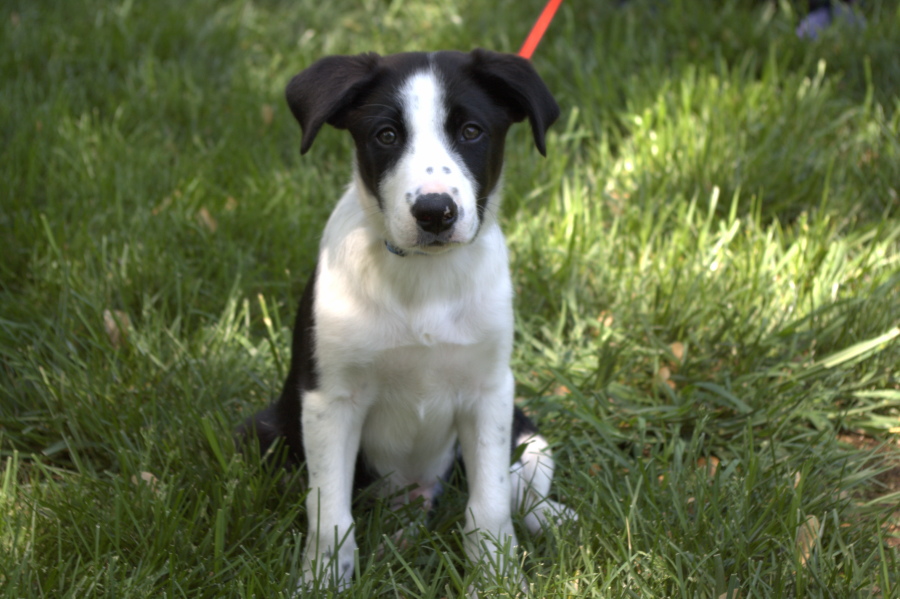07:20 – UPS showed up yesterday with a whole bunch of bottles and lids. I shoved them into the spare room that used to be full of computer gear until I have time to move them downstairs.
When we ordered the Pentax K-r DSLR, I was hoping that the Live View feature would make it easier to shoot images through the microscope, and indeed it has. Here’s Aspergillus sp. at 100X showing conidia and spores.
 It’s still difficult to achieve proper focus, but much less so than it was without Live View. Without Live View, I often had to shoot literally 30 or 40 images of the same view to get one in reasonably good focus. It’s near impossible to focus on an SLR focusing screen when viewing through a microscope. With Live View, I can generally get a pretty well-focused image by shooting three or four images and tweaking the focus slightly each time.
It’s still difficult to achieve proper focus, but much less so than it was without Live View. Without Live View, I often had to shoot literally 30 or 40 images of the same view to get one in reasonably good focus. It’s near impossible to focus on an SLR focusing screen when viewing through a microscope. With Live View, I can generally get a pretty well-focused image by shooting three or four images and tweaking the focus slightly each time.
Of course, the real problem is that for most subjects there’s really no such thing as proper focus, because those subjects are actually three-dimensional. Although many appear to be two-dimensional, most of them actually have depth. It’s often a matter of 100 micrometers or less, but that still means that when one part of the object is in focus, others aren’t, particularly at higher magnifications. Even in this image, which is a thin section at only 100X, some of those tiny little spores are sharply focused and others aren’t. That’s because some of them lie above the plane of focus, and others below.
I’ve often wondered if I should use stacking software designed for astrophotography to shoot composite photomicrographs with everything is in focus. The problem in astrophotography isn’t focus–everything is at infinity–but turbulence in the atmosphere, which changes constantly and blurs parts or all of the object. With stacking software, you shoot many images–hundreds to thousands–and then process them with the stacking software. It finds the non-blurred parts, if any, of each individual image and then combines those into one composite image. Processing an image is, of course, resource intensive, both in terms of disk and CPU. Even a fast PC may need several minutes to many hours to complete the stacking process, depending on image resolution and the number of frames in the sample.
Of course, I wouldn’t shoot dozens to hundreds of photomicrographs separately. Instead, I’d focus the microscope as well as I could and then adjust focus one direction or the other until the image was clearly out of focus I’d then turn on the Pentax K-r video mode and capture 720p video for 30 seconds or a minute as I very slowly ran the focus in the other direction. It’d be an interesting experiment, but of course the results would be low-resolution (720p), probably not good enough for publication. Also, I just don’t have time to do this. Finally, using images that were in sharp focus across the entire field would raise unrealistic expectations among readers, i.e., “What’s wrong with my microscope?”
09:42 – Amazon says they sold four times as many Kindles on Black Friday this year as they did last year. Presumably the same held true yesterday for Cyber Monday. Of course, a lot of those Kindles are Kindle Fires, which I suspect most buyers intend to use primarily as tablets rather than e-readers. Reading ebooks on a backlit display is a miserable experience, as anyone who’s used both backlit LCD and e-Ink readers can tell you. So the reality is that e-reader sales have perhaps only doubled year-on-year, if you consider e-readers to include only devices that people actually use primarily for reading.
Sales of e-readers last December were high enough to cause catastrophic sales declines for print books, particularly MMPBs, which fell about 50% year-on-year. Sales of e-readers this month should be sufficient to pretty much kill MMPB entirely, not to mention driving another nail in the coffin of trade paperbacks and hardbacks. For now, trad publishers are hanging on, although they’re doing so by raping customers with $10 and higher ebook prices and raping authors with 17.5% royalty rates. That won’t go on much longer, as more and more people, both readers and authors, come to understand that even $2.99 is a pretty high price for just a license to read a book, and as more and more titles become readily available on torrents. By this time next year, I suspect a lot of people will be trading multi-gigabyte ebook archives in the same way they started trading MP3 archives years ago.
10:49 – I just got email from a reader asking which Kindle I’d recommend, and why. There’s no single answer to that, so here goes:
If you’re a serious (heavy) reader of novels, no question, the baby Kindle 4 is the best pure ebook reader. At only $79 ($109 without ads), this should be a no-brainer for any serious reader. It’s noticeably smaller and lighter than the other models, so nearly anyone can use it one-handed, and it just gets out of your way while you’re reading. If you take notes, play games, or otherwise use a keyboard or if you want to listen to audio books, this model is a bad choice, but otherwise go for it. The ads, incidentally, are not at all intrusive. You see them only on the screensaver and as a small pane at the bottom of the screen that lists your titles. As regular readers know, I hate and despise ads, and these don’t bother me even slightly.
If you’re a serious fiction reader who does need a keyboard or listens to audio books, go with the Kindle 3. It’s larger and heavier than the baby Kindle and some people will have trouble holding it securely with one hand, but otherwise it’s a match for the baby Kindle except that it has a physical keyboard and audio support.
If you’re looking for a cheap iPad and you intend to use it only casually for reading ebooks, go for the Kindle Fire. Just be aware that, although the Fire is probably about as good for reading ebooks as an iPad, in real terms that means it isn’t very good at all.
Finally, the bastard child, Kindle Touch. This might actually have been my first choice, if only Amazon had included physical page-turn buttons. They didn’t, which means to turn pages you have to move your finger and touch the screen, which really, really gets in the way of reading. Not to mention smearing up the screen. About the best I can say for the Kindle Touch is that its virtual keyboard, which is operated by touching the keys on-screen, is a lot better than the baby Kindle’s virtual keyboard, which requires moving the cursor around using the arrow keys on the controller button. Still, if you need a keyboard, in my opinion the original Kindle 3 (now the Kindle Keyboard), with its physical keyboard, is a much better choice.



